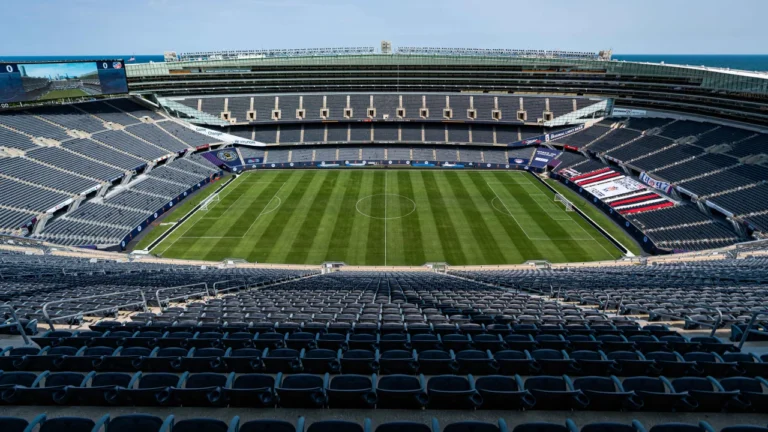Chicago Fire, the city’s Major League Soccer team, has unveiled plans to build a $650 million stadium in downtown Chicago. This stadium will be fully funded by the team without any public money. The new Chicago Fire stadium will be located on the Near South Side, a prime area in downtown Chicago that was once considered for a new baseball stadium for the Chicago White Sox. When Illinois officials declined public funding for the baseball project, the site became available for the Fire’s stadium plan. The soccer team quickly moved forward, gaining support from the city due to the project’s private funding and alignment with local development goals.
The planned stadium will have a seating capacity of about 25,000 people and is expected to open in 2028. Currently, Chicago Fire plays its home matches at Soldier Field, a large stadium mainly designed for American football. The move to a smaller, soccer-specific stadium aims to enhance the fan experience by creating a better atmosphere and a venue tailored to the needs of soccer games. Team officials believe this stadium will serve as a true home for the club, improving engagement with fans and boosting the team’s identity in the city.
The decision to pursue a privately funded stadium is significant. Many stadium projects across the United States rely heavily on public funding, using taxpayer dollars to help cover construction costs. However, Chicago Fire’s $650 million investment is fully private, which local officials see as a positive approach. By avoiding the use of public money, the project brings new development and economic benefits without adding financial burdens to the city or its residents.
The stadium project is expected to generate several economic advantages. Construction will create numerous jobs, benefiting local workers and contractors. Once operational, the stadium is likely to boost nearby businesses, including restaurants, hotels, and retail stores, by attracting more visitors to the area. Beyond the stadium itself, the plan includes new training grounds and community spaces. These areas may be used by local youth soccer teams and other community programs, helping to promote soccer at a grassroots level in Chicago.
City planners also anticipate that the new Chicago Fire stadium could attract a wider variety of events. In addition to regular soccer matches, the venue may host concerts and international soccer games, increasing the city’s appeal as a destination for major events. While some experts note that stadiums do not always deliver large economic returns, the success of this project will depend on how well it integrates with the local economy and community.
The announcement has been generally well received by the public and Chicago Fire fans. Supporters are excited about having a stadium dedicated solely to soccer, which they believe will improve the overall game-day experience. However, some local groups have raised concerns about potential increases in traffic and rising housing prices near the stadium site. To address these worries, the city plans to hold public meetings to gather feedback and make any necessary adjustments to the project plans.
Construction of the stadium is scheduled to begin in 2026. Before building can start, the project must receive final approvals, including environmental reviews and zoning changes. The Chicago Fire organization is working closely with city agencies to ensure all regulations and requirements are met during the planning and construction phases.
Chicago Fire is not alone in this trend of building soccer-specific stadiums. Other MLS teams in cities like Nashville, Austin, and St. Louis have recently opened new stadiums designed specifically for soccer. These venues aim to attract more fans and provide a better atmosphere during matches, contributing to the growth of soccer in the United States.
The timing of Chicago Fire’s stadium project is also notable. Soccer’s popularity continues to rise across the country, and the 2026 FIFA World Cup, which will be hosted in North America, is expected to bring even more attention to the sport. The new stadium could position Chicago as a host city for international games during the World Cup and help the city play a larger role in global soccer events.
The Chicago Fire stadium project highlights the team’s commitment to the city and the future of soccer in the region. By investing $650 million without public funding, the team is setting an example for how sports facilities can be developed in major cities. The stadium promises to enhance fan experiences, support local communities, and contribute to the ongoing growth of soccer in Chicago.







